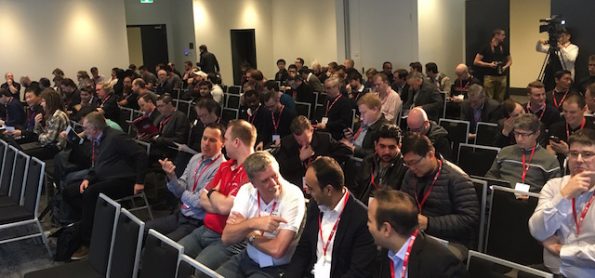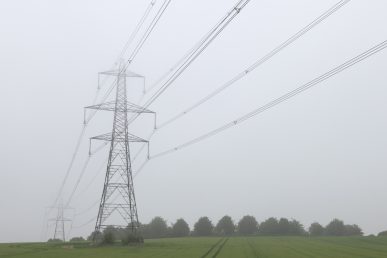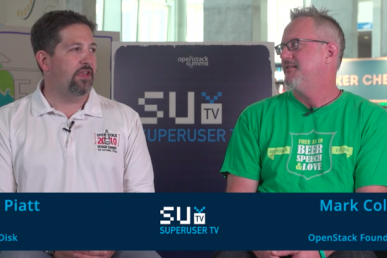Melbourne, known for topping lists of the world’s most livable cities, recently played host to the third Australian OpenStack Day.
With three tracks—focused on business, innovation and technical aspects of OpenStack—the event offered something for everyone among 200-plus attendees and seeded lots of excitement for the upcoming OpenStack Summit in Sydney.
Virtually all attendees indicated by a raise of hands that they were residents of Australia or New Zealand, but that still brought in participants from afar—one attendee jumped on a red eye from Perth just to attend, with a flight home immediately after the sessions. Held at the Rydges Hotel in the historic city center, the venue served up retro decor including food carts and an entire wall of doughnuts.

About 20 percent of attendees also indicated they were using OpenStack for academic or research purposes, a much larger representation than the last User Survey, where 11 percent of users are involved in academics/research. With this large contingent and representation from OpenStack early adopter Australian research cloud NecTAR, hallway conversations were often research-focused.
Jonathan Bryce, executive director of the OpenStack Foundation, spoke during the keynote about the transition from first-generation cloud architecture focused on hyperscale and virtualization, to second-generation clouds now focused on integrating a variety of services and technologies.
His belief that “we’re at a tipping point in terms of cloud technology” caught the attention of Lifehacker Australia reporter Anthony Caruana who commented on Bryce’s point, “I think he’s right.” You can check out the full article here.
Mr Bryce kicking off the openstack day Melbourne with container adoption in the stack. @prasadkale @AnthonyRees pic.twitter.com/IkJhdAhmks
— Alex Tesch (@tesch75) May 31, 2017
I led a session that walked attendees through insights from the most recent OpenStack User Survey
During his presentation later in the day, Adrian Koh from EasyStack added more data on open source use in China based on a separate survey. Presentations were recorded; you’ll be able browse the tracks and view recordings here:

One fun gem from presentations: a then-and-now comparison of common developer equipment. Avi Miller of Oracle presented what he called “kind of an ‘eating your own dog food’ case study,” and recalled a time when newly hired developers were issued a laptop and two physical racks. Now, he said, developers get their laptops and between 10 and 1,000 virtual machines, depending on the needs of their roles.
Another favorite quote comes from Andrew Boag, managing director of Catalyst IT, who argued that object storage is the future of storage. He offered this definition: “Complex problems are the ones that when we propose new solutions, what we end up changing is the problem.”
- OpenStack Days Melbourne: a tipping point in cloud technology - June 5, 2017
- OpenStack Summit veterans share their best tips for newbies - May 1, 2017
- OpenStack User Survey shows wider adoption, larger clouds - April 24, 2017

)










